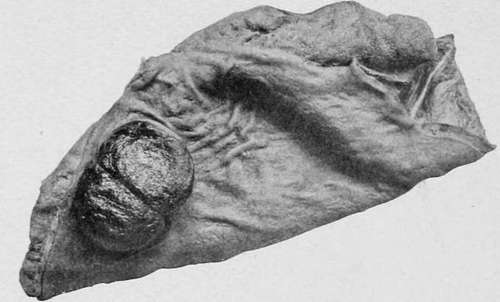Lipomata
Description
This section is from the book "Cancer And Other Tumours Of The Stomach", by Samuel Fenwick. Also available from Amazon: Cancer and other tumours of the stomach.
Lipomata
(3) Lipomata occur as yellow round or lobulated tumours in the wall of the stomach about its centre. As a rule they form well-marked projections upon the inner surface, which vary from the size of a small nut to that of a pigeon's egg, and, being situated in the submucous coat, are covered by mucous membrane. In other cases they originate in the subserous connective tissue, and form large and somewhat pendulous tumours on the external surface of the organ, near its lower margin (Orth, Russdorf). Very rarely the growth assumes a more diffuse character and affects a large area of the gastric wall (Eead). These tumours are seldom accompanied by any special symptoms, but in the case of the large subserous variety there may be a complaint of weight and dragging, arising from the mechanical displacement of the stomach. It may also be possible to detect one or more soft, smooth, painless, and movable masses on palpation of the abdomen. Both varieties are apt to become pedunculated, and in rare instances they are converted into cysts (p. 339) or acquire a malignant character.

Fig. 70.-Lipoma of the stomach. (London Hospital Museum.).
Continue to:
- prev: Fibromata
- Table of Contents
- next: Lymphadenoma
